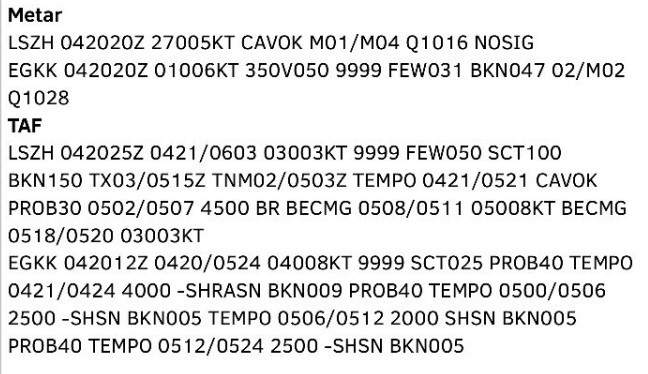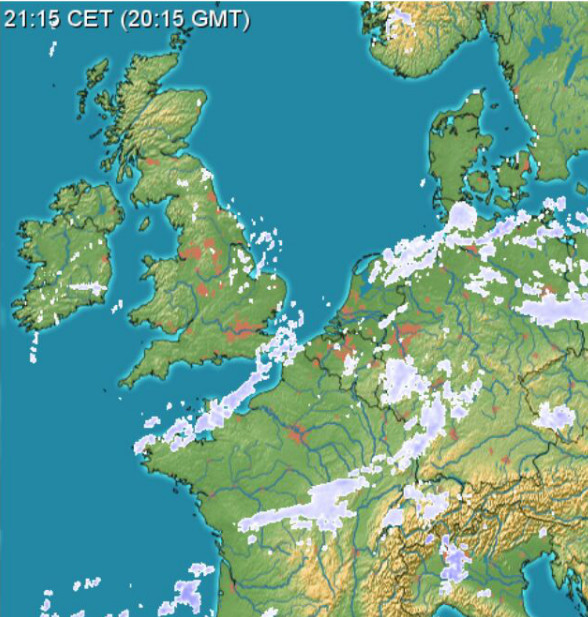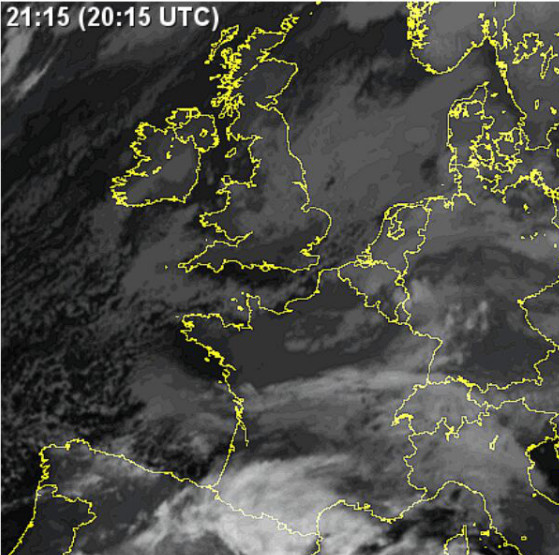Yesterday the Gatwick to Zurich Easyjet flight was delayed by some 30-45 mins. While boarding, it was being de-iced by the ground vehicle. The crew said “Easyjet is not taking any chances” of course 
The wx did not appear specially bad:



Looking at the IR image I estimate cloud tops over Switzerland c. FL100-150, and obviously one cannot tell from that what sort of cloud there was. But the radar shows almost nothing.
On getting out at Gatwick I walked past the pilots and asked whether they got the bad ice while in the hold at Zurich and they said it (if I heard right) it was just during extended vectoring due to lots of arrivals. There was no time to ask them about what level etc.
This must be pretty unusual. It must have cost EJ a k or two. Normally, AIUI, ground de-ice is used when a plane was parked on the ground and got iced up due to frost, rain freezing, etc. IOW this kind of thing.
I had a diversion with BA due to a runway incident, then, on the approach in conditions you would hardly think condusive to ice, accumulation on the approach, (the pilots had not expected ice and not used any de-ice), followed by a delay on the ground for over an hour waiting for the ice to melt (there were no de-icing facilities at the diversion airport). You could see very light rim ice on the wing; the pilots declaring they could not go with any evidence of ice at all (after they had made a few calls to base to see if there was any latitude). It could have been EJ, I cant recall.
Some aircraft (e.g. A340) have outer wing tanks where the fuel is much colder than the rest, because of lack of circulation. That doesn’t matter in flight (usually) but after landing any moisture can freeze on the wing areas over those tanks, so the aircraft will need deicing before the next departure.
And yes, in the winter, airliners pick up airframe icing just like GA if they spend much time in icing conditions. Critical areas are anti-iced in flight but residual ice needs to be removed before the next sector.
Yes. Cold soaked fuel will produce ice at the underside of the wing. It usually melts off due to new warm fuel being uplifted. Depending on prevailing conditions and due to condensation there can be ice on top of the wing too. Fuselage frost is ok to a conservative limit. Any ice on the upper wing and control surface needs to be removed before take off. If required to deice/antiice at all the wings and stabilizer will get treatment together.
If it is humid the fan blades might ice up during taxi and need to be treated with hot ground air as well.
A good 70% of the time de-icing is needed, it is on a portion of the wing between the engine and fuselage where the landing gear is attached, and it forms the shape of a T. This photo is a great example (also showing the outboard wing tank icing mentioned by Snoopy).

It’s very common to various extents and can often be remedied by uplifting “warm” fuel.
Peter wrote:
This must be pretty unusual. It must have cost EJ a k or two.
De-icing is so costly that any profit that flight would’ve made is instantly wiped out. Any flight that requires de-icing incurs a loss (for easyJet at least).
I was on a RyanAir flight out of Oslo a few years ago that needed deicing on the ground. The crew explained that they’d picked up some icing on the descent into Oslo on the previous sector and policy was that all ice had to be removed before flight.
In the conditions ZRH had in the metar provided, it is not impossible that there was general de-icing in progress. With the temperatures on the ground and the relatively high humidity (spread only 3 degrees) it is not unlikely that fuel tank icing or other stuff took place. In which case de-icing is sop and better so.
Not all airlines take things so seriously. Look at this example.
http://www.avherald.com/h?article=4a8374d0&opt=0
Totally unacceptable but they still got away with it. Try this in a Fokker 28/70/100 or a Canadair Challenger and you got an accident.
There are different methods to deice an aircraft (did I see the link here before?) 
You might get away with poor deicing in the all engine case – however in case of an engine failure at take-off and V2 as climb speed you will have no positive rate of climb …